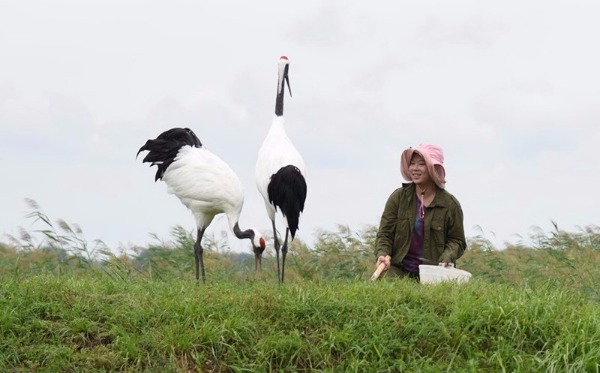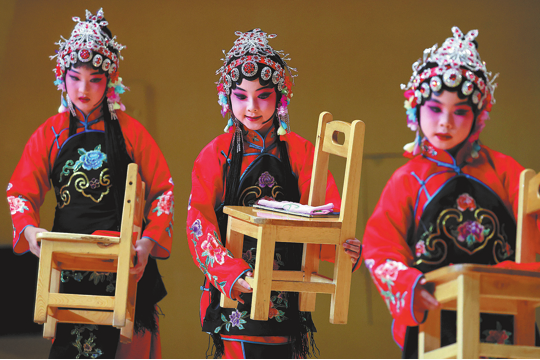Bird protector takes wing to continue family tradition


A young woman is the third generation to devote her life to the protection of red-crowned cranes, as Tian Xuefei and Zhou Huiying report from Harbin.
Every day, Xu Zhuo, 25, opens her diary and writes down the details of her daily work-feeding, breeding, inoculating and curing red-crowned cranes. She is following in the footsteps of her grandfather, father and aunt in a story that combines dedication and tragedy.
In 2016, when Xu graduated from Northeast Forestry University in Harbin, Heilongjiang province, she declined the offer of postgraduate study and instead became a researcher into the breeding and protection of red-crowned cranes at the Zhalong Nature Reserve in Heilongjiang.
Established in 1979, the reserve, located in the western part of Heilongjiang, is a well-preserved primitive wetland.
Covering 2,100 square kilometers, the wetland lies on a major migratory route for birds from the Arctic to Southeast Asia, and is stopover point and nesting area for a large number of bird species including storks, swans, herons and grebes.
In 1992, the Ramsar Convention on Wetlands listed the reserve, which is home to about 400 wild red-crowned cranes, as an International Important Wetland Protectorate.
- China opens draft regulations on data protection to public consultation
- Veteran French physicist elected to Chinese Academy of Sciences
- Former Polish deputy PM praises China's economic rise, growing influence
- HK powers the nation's equestrian development
- Forum hailed for promoting Global South modernization
- Wushu needs more events in GBA, coaches in Macao say




































